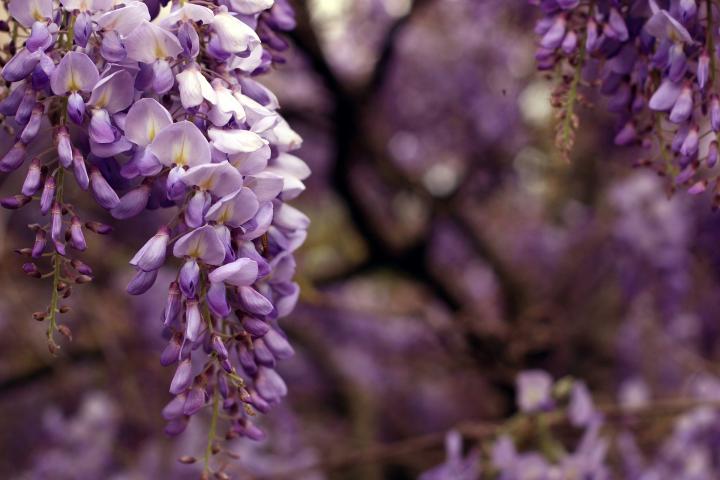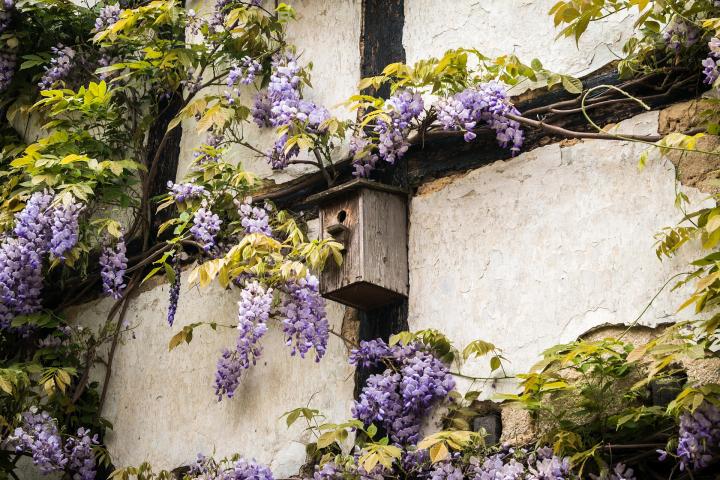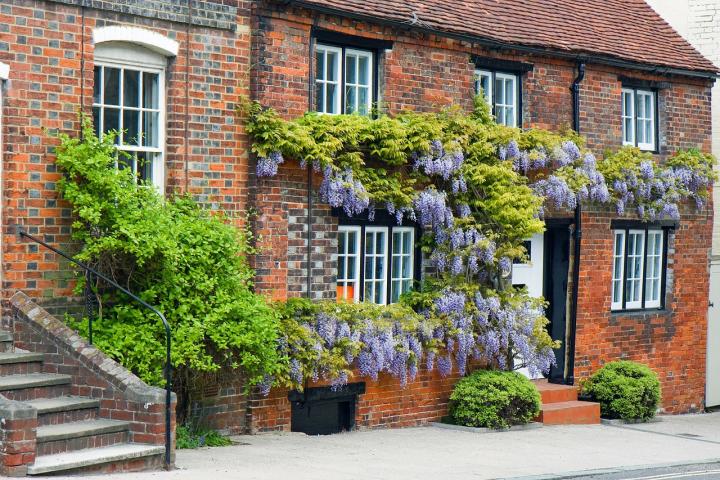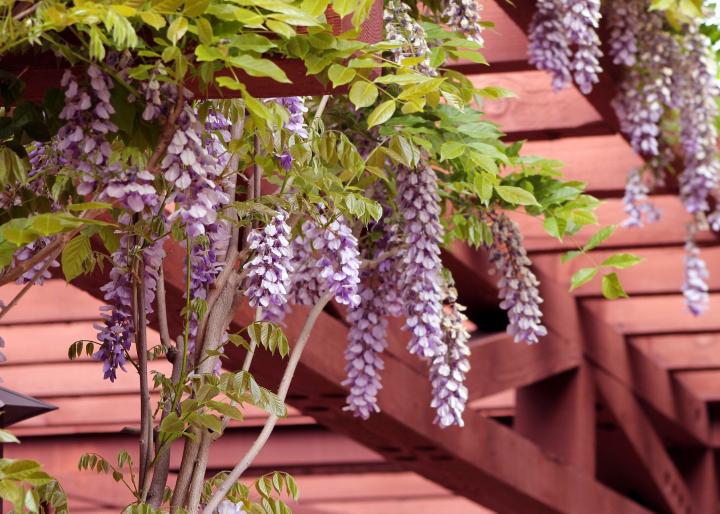
Photo Credit
Pixabay
Subhead
Planting, Growing, and Pruning Wisteria
Read Next
Types
Native Wisteria
If you are located in North America, consider planting a species of wisteria native to the continent, such as:
- American wisteria (W. frutescens) grows in Zones 5 to 9. It’s native to a range of states covering Virginia to Texas, southeast to Florida and north up through New York, Iowa, and Michigan. The vine grows 25 to 30 feet long with shiny dark-green leaves and large, drooping lilac or purple-blue flower clusters, which appear after the plant has leafed out. The blooms will only appear on new wood. However, note that the flowers tend to be more lightly fragrant than the Asian wisterias’ flowers.
- Kentucky wisteria (W. macrostachya) grows in Zones 4 to 9. This late-season bloomer is native to the southeastern U.S. and is similar to American wisteria (it is sometimes considered a variety or subspecies of American wisteria). Kentucky wisteria bears mildly fragrant bluish-purple flowers after growing only 2 to 3 years, making it the quickest wisteria to bloom.
- ‘Blue Moon’ is an extra-hardy cultivar of native Kentucky wisteria, with showy silvery-blue clusters. It blooms in late spring or early summer. It’s cold hardy to –30°F.
Non-Native Wisteria
- Chinese wisteria (W. sinensis) and Japanese wisteria (W. floribunda) are non-native, invasive species, so we do not recommend them for North American gardens, despite the fact that they are regularly sold at nurseries and garden centers. They are hardy in Zones 5 to 9 and are capable of growing 30 to 60 feet in length (and beyond in the Southern U.S.). Two common varieties of Japanese wisteria include:
- ‘Honbeni’ (syn. ‘Honko’): popular, bears clusters of pink flowers in late spring
- ‘Alba’ (syn. ‘Shiro Noda’): bears lovely clusters of pure-white flowers in late spring

Gardening Products
More Like This

Make sure the plant is located in full Sun. You can also try adding phosphorous to the soil, which will help the bloom, and maybe the color!
Thanks for your interest in the Old Farmer's Almanac and our Web site.
This is the first year our wisteria bloomed and all of a sudden the leaves were stripped off on nearly the entire plant. All I found eating its leaves was one grasshopper. What can I spray this lovely plant with and will it get more blooms this year. mzroper@yahoo.com live in Baldwin MI
My wisteria has a few pea like hanging in and I wondered what they were, what they do and if they are eidble.
on the page it said poisonous
I got a wisteria in a pot late last summer - it bloomed twice, still in pot (can't figure out where to plant and it's in full bloom again and has been in partial sun to shade. No I'm afraid if I plant it it wont bloom and really don't have any full sun spots where it can climb. Any suggestions?
When I bought my wisteria it basically looked like a stick stuck in a bag full of soil, when I went to plant it I took it out of the bag and there was no root ball, bulb or anything of that sort, it was just a stick in dirt, is this normal? I planted it. I don't know why because it makes no sense that it would grow without roots or seeds. Are they sold like that?
Yes, mine too looked like a stick (that came out of the bag)....I planted the dirt? Should I stick the stick back in the dirt also? (Or is there something in the soil????) I am confused.
Yes, plant in the ground. Pick a site that's 2 to 3 feet in diameter and 18 to 24 inches deep -- with full sun and deep, moist soil. They prefer a neutral to slightly acid soil pH of 6.0-7.0. Some type of support will be needed. Prepare the soil by mixing in some compost or well-rotted manure. Place the roots into the hole and fill with the mix of soil and compost. Water well. Make sure your plants gets 1 inch of water per week (through rainfall or irrigation).
- « Previous
- 1
- 2
- …
- 10
- Next »












Comments